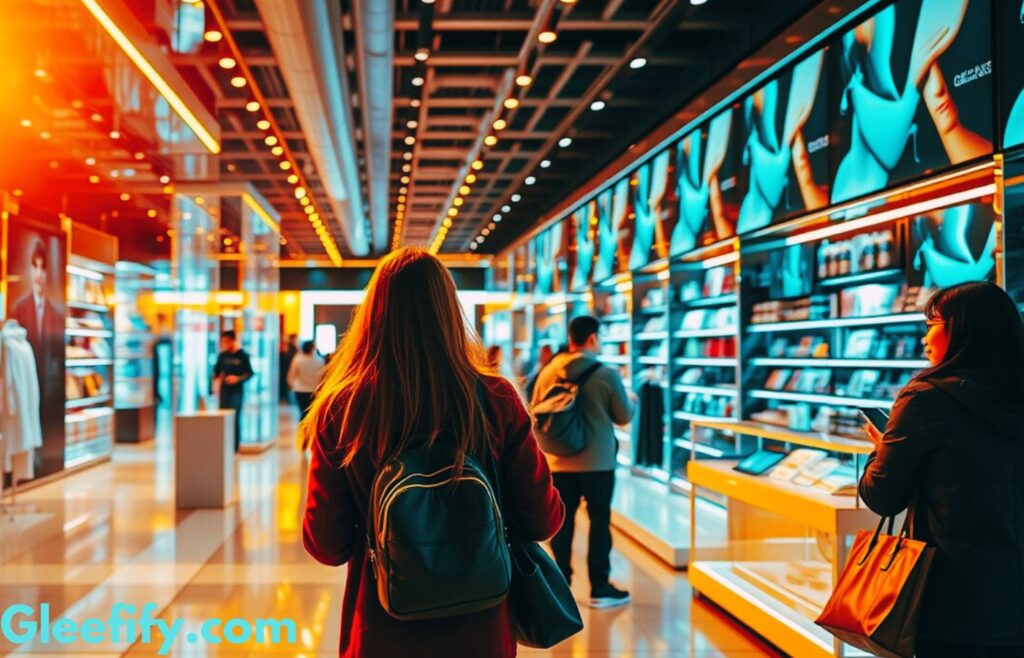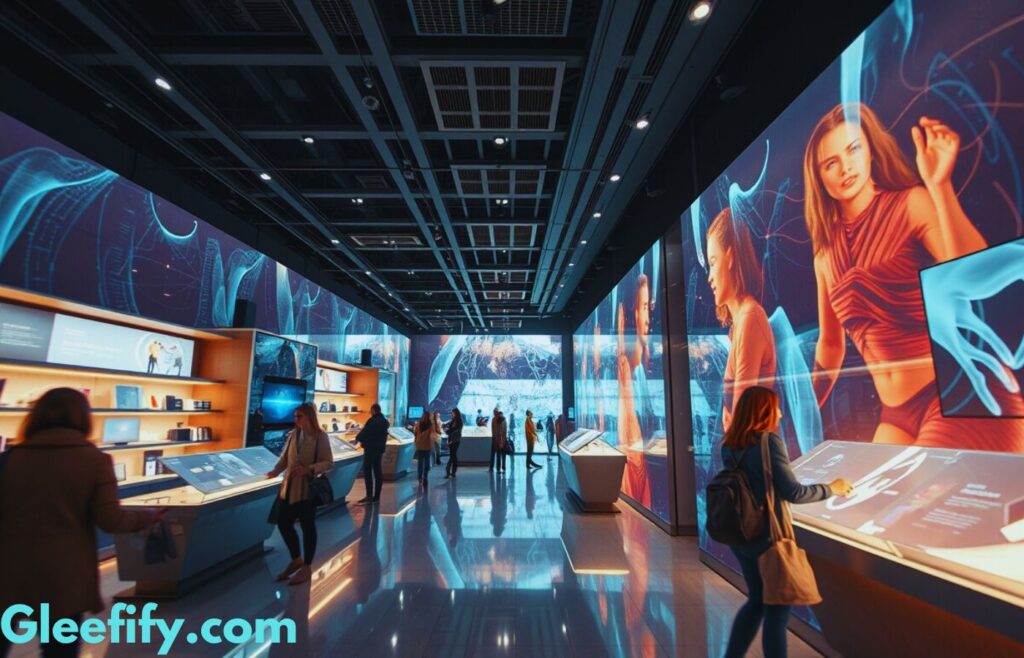Web&Store: The Future of Seamless Online and Offline Shopping
In the evolving world of eCommerce and digital retail, businesses are increasingly adopting Web&Store strategies to provide customers with a seamless shopping experience. The integration of online and offline sales channels is no longer optional—it’s essential for growth.
Whether you run a small business or a large enterprise, understanding how Web&Store solutions work can help you stay ahead of the competition. In this article, we’ll explore the latest trends, technologies, and actionable strategies to help businesses optimize their Web&Store model.
What is Web&Store?
Web&Store is a hybrid retail model that combines the best aspects of online shopping (Web) and physical stores (Store). It enables businesses to offer:
- Omnichannel shopping experiences (customers can shop online, pick up in-store, or have items delivered).
- Real-time inventory management across all sales channels.
- Personalized marketing and promotions based on online and offline purchase history.
This approach helps businesses maximize sales, improve customer retention, and create a unified brand experience.
 Why is Web&Store Important in 2025?
Why is Web&Store Important in 2025?
1. The Growth of Omnichannel Retail
According to a report by Statista, omnichannel shoppers spend 30% more than single-channel shoppers. Consumers today expect to switch between online browsing, mobile shopping, and in-store visits without any friction.
By integrating Web&Store, businesses can:
✅ Offer click-and-collect services to increase in-store foot traffic.
✅ Reduce abandoned carts by offering in-store pickup options.
✅ Use smart checkout systems that link online and offline purchases.
2. AI-Powered Personalization
Artificial Intelligence (AI) is transforming how retailers interact with customers. Using AI, businesses can:
- Analyze customer data to provide personalized product recommendations.
- Offer AI-driven chatbots for instant customer support.
- Optimize pricing with dynamic pricing algorithms.
🔹 Example: Amazon and Walmart use AI to track customer behavior and recommend products based on browsing history.
3. The Rise of Mobile Shopping
Over 73% of eCommerce sales now come from mobile devices (Forrester Research). Businesses using Web&Store need mobile-friendly websites and progressive web apps (PWAs) to enhance customer experience.
💡 Best Practices for Mobile Optimization:
- Use responsive design for smooth navigation.
- Implement one-click checkout for faster transactions.
- Enable mobile payments like Apple Pay and Google Pay.
4. Smart Inventory Management with Cloud Technology
Cloud-based inventory management ensures that stock levels are automatically updated across all sales channels. This prevents overselling or stockouts, improving the shopping experience.
✅ Key Benefits:
- Real-time inventory tracking.
- Predictive analytics to forecast demand.
- Automated reordering to maintain stock levels.
🔹 Example: Zara uses RFID (Radio Frequency Identification) tags to track inventory across stores and online platforms in real time.
5. Social Commerce & Web&Store Integration
Social media platforms like Instagram, TikTok, and Facebook are now shopping destinations. More brands are integrating their Web&Store strategy with social commerce by:
- Using shoppable posts to link products directly to their website.
- Running live shopping events for product launches.
- Leveraging influencer marketing to drive traffic to both physical and online stores.
🔹 Example: Nike and Sephora use Instagram shopping features to drive sales directly from social media.
Benefits of Web&Store for Businesses
The Web&Store model is revolutionizing retail by blending the convenience of online shopping with the engagement of physical stores. Businesses adopting this strategy experience higher sales, better customer retention, and improved brand loyalty. Below are the key benefits of Web&Store for businesses.
1. Increased Sales with Omnichannel Shopping
Consumers today use multiple channels before making a purchase. A seamless Web&Store integration allows businesses to:
✅ Sell through websites, physical stores, and social media simultaneously.
✅ Reduce abandoned carts by offering Buy Online, Pick Up In-Store (BOPIS).
✅ Use AI-driven product recommendations to boost cross-selling and upselling.
💡 Example: Target increased sales by using online-to-offline strategies like in-store pickup and curbside delivery.
2. Enhanced Customer Experience & Convenience
Modern shoppers expect a personalized and hassle-free shopping experience. Web&Store provides:
✅ Flexible shopping options (in-store, online, curbside pickup).
✅ Seamless return policies, allowing customers to return online purchases in-store.
✅ AI-powered chatbots for instant customer support.
💡 Example: Apple allows customers to check product availability online and schedule in-store pickups for a frictionless experience.
3. Better Inventory Management & Reduced Costs
A synchronized inventory system ensures that products are available when and where customers need them. Benefits include:
✅ Real-time stock updates across all sales channels.
✅ Lower storage costs by optimizing stock distribution.
✅ Data-driven demand forecasting to prevent overstocking or stockouts.
💡 Example: Zara uses RFID technology to manage inventory efficiently across online and physical stores.
4. Stronger Brand Loyalty & Customer Retention
Customers who engage with brands both online and offline are more likely to return.
✅ Loyalty programs that reward purchases across channels.
✅ Personalized promotions based on shopping behavior.
✅ Exclusive in-store experiences (events, product trials, VIP access).
💡 Example: Starbucks integrates app-based rewards with in-store purchases, keeping customers engaged.
5. Boosted Marketing & Social Commerce Opportunities
Web&Store enables businesses to leverage social media and influencer marketing effectively.
✅ Shoppable posts on Instagram, Facebook, and TikTok.
✅ Live shopping events to drive engagement.
✅ AI-powered product suggestions based on browsing history.
💡 Example: Fashion brands like Nike and Sephora use social media to link online shopping with in-store experiences.
6. Competitive Advantage & Future-Proofing
Businesses adopting Web&Store gain a competitive edge by staying ahead of digital trends.
✅ Augmented Reality (AR) allows customers to try products virtually.
✅ Voice search optimization for smarter shopping experiences.
✅ Blockchain payments for secure and transparent transactions.
💡 Example: Gucci launched a virtual store in the Metaverse, combining digital and physical shopping.
Popular Web&Store Platforms and Providers
Integrating Web&Store solutions helps businesses bridge the gap between online and offline retail, offering customers a seamless shopping experience. Whether you need omnichannel management, inventory synchronization, AI-driven personalization, or mobile-friendly shopping solutions, choosing the right platform is crucial.
Below are some of the top Web&Store platforms and providers that help businesses streamline their operations and enhance customer experiences.
1. Shopify Plus – Best for Scalable eCommerce & Physical Store Integration
Why Choose Shopify Plus?
✅ Omnichannel Selling: Sell across online stores, social media, and brick-and-mortar locations.
✅ POS System Integration: Shopify POS syncs in-store sales with online inventory.
✅ AI-Powered Personalization: Automated product recommendations based on browsing history.
💡 Best For: Medium to large businesses looking for a unified online and offline commerce solution.
🔗 Website: Shopify Plus
2. WooCommerce – Best for WordPress-Based Businesses
Why Choose WooCommerce?
✅ Seamless WordPress Integration: Perfect for businesses with a WordPress website.
✅ Flexible Web&Store Capabilities: Use plugins like Square or Stripe for in-store and online payments.
✅ Open-Source Customization: Fully customizable with various extensions for inventory and POS.
💡 Best For: Small to mid-sized businesses looking for affordable and customizable Web&Store solutions.
🔗 Website: WooCommerce
3. Magento (Adobe Commerce) – Best for Enterprise-Level Businesses
Why Choose Magento?
✅ Advanced Inventory Management: AI-driven forecasting and real-time stock updates.
✅ Omnichannel Commerce: Supports BOPIS (Buy Online, Pick Up In-Store) and multiple payment gateways.
✅ AI-Powered Personalization: Custom product recommendations based on customer behavior.
💡 Best For: Large enterprises with complex inventory and customer experience needs.
🔗 Website: Adobe Commerce (Magento)
4. BigCommerce – Best for Multi-Channel Selling & Scalability
Why Choose BigCommerce?
✅ Unified Commerce: Manage online and offline sales from a single dashboard.
✅ Cross-Platform Sales: Sell on marketplaces like Amazon, eBay, Facebook, and Instagram.
✅ Advanced SEO & Mobile Optimization: Helps boost search engine rankings and mobile conversions.
💡 Best For: Brands looking for multi-channel retail expansion with powerful SEO and sales tools.
🔗 Website: BigCommerce
5. Square – Best for Small Retailers & Restaurants
Why Choose Square?
✅ Easy POS Integration: Accept payments both online and in-store with Square POS.
✅ Inventory Syncing: Automatically updates stock levels between online and offline locations.
✅ Subscription & Membership Features: Great for service-based businesses and restaurants.
💡 Best For: Local businesses, cafés, and retailers looking for an affordable POS system with eCommerce capabilities.
🔗 Website: Square
6. Salesforce Commerce Cloud – Best for AI-Powered Omnichannel Retail
Why Choose Salesforce Commerce Cloud?
✅ AI-Driven Shopping Experiences: Uses Salesforce’s Einstein AI for personalized recommendations.
✅ Enterprise-Grade CRM Integration: Provides a 360-degree view of customer data across channels.
✅ Seamless Mobile & Social Shopping: Supports mobile-first design and social commerce.
💡 Best For: Enterprise-level retailers needing an AI-driven, CRM-integrated Web&Store solution.
🔗 Website: Salesforce Commerce Cloud
7. Lightspeed – Best for Retail & Hospitality Businesses
Why Choose Lightspeed?
✅ Retail & Restaurant POS: Ideal for businesses in fashion, hospitality, and food industries.
✅ Real-Time Inventory Tracking: Syncs inventory across multiple locations.
✅ Customer Loyalty Programs: Offers integrated rewards and membership features.
💡 Best For: Boutiques, cafes, and service-based businesses looking for a smart POS and Web&Store solution.
🔗 Website: Lightspeed
8. Ecwid – Best for Small Businesses Looking for a Free Solution
Why Choose Ecwid?
✅ Free & Affordable Plans: Great for startups and small businesses.
✅ Multi-Channel Sales Support: Sell on websites, social media, and marketplaces.
✅ Seamless POS Integrations: Works with Square, Clover, and Stripe for in-store payments.
💡 Best For: Small businesses and entrepreneurs looking for a low-cost, easy-to-use Web&Store solution.
🔗 Website: Ecwid
9. Wix eCommerce – Best for Beginners & Small Businesses
Why Choose Wix eCommerce?
✅ Drag-and-Drop Website Builder: Easy setup without coding.
✅ Integrated Online & Offline Selling: Syncs with Square and PayPal POS.
✅ Automated Marketing Features: Email marketing, abandoned cart recovery, and SEO tools.
💡 Best For: Small businesses and startups needing a simple Web&Store solution with marketing automation.
🔗 Website: Wix eCommerce
10. PrestaShop – Best for Open-Source Customization
Why Choose PrestaShop?
✅ Open-Source & Highly Customizable: Modify every aspect of your store.
✅ Omnichannel Capabilities: Supports in-store POS and third-party integrations.
✅ International Selling: Multilingual and multi-currency support for global businesses.
💡 Best For: Developers and tech-savvy businesses looking for a flexible and customizable Web&Store platform.
🔗 Website: PrestaShop
How to Choose the Best Web&Store Platform for Your Business?
When selecting a Web&Store provider, consider:
✅ Business size and industry needs (e.g., retail, hospitality, eCommerce).
✅ Budget and scalability (free vs. enterprise solutions).
✅ POS and inventory management features.
✅ Omnichannel capabilities (social commerce, mobile sales, marketplaces).
✅ AI-driven personalization and customer engagement tools.
💡 Pro Tip: Start with a free trial or demo before committing to a platform.
Which Web&Store Platform is Right for You?
The right Web&Store solution depends on your business model and growth strategy:
✔ For enterprises: Magento, Salesforce Commerce Cloud, or BigCommerce.
✔ For small to mid-sized businesses: Shopify, Square, or Wix.
✔ For restaurants & retail stores: Lightspeed or Square POS.
✔ For budget-conscious startups: Ecwid or WooCommerce.
✔ For developers: PrestaShop (customizable & open-source).
By integrating the best Web&Store platform, businesses can boost sales, improve customer engagement, and future-proof their operations. 🚀
How to Implement Web&Store for Your Business?
Step 1: Build a Unified Digital and Physical Experience
Ensure that your online and offline store provides a consistent shopping journey. Some key actions include:
- Syncing pricing, promotions, and discounts across all platforms.
- Offering loyalty programs that reward both online and in-store purchases.
- Implementing self-checkout kiosks in-store to reduce wait times.
Step 2: Optimize Your Website for Conversions
Your website should act as a digital storefront that converts visitors into customers. Focus on:
✅ Fast-loading pages (less than 3 seconds).
✅ A clear call-to-action (CTA) on every page.
✅ High-quality product images and videos.
Step 3: Offer Flexible Payment & Fulfillment Options
Customers value convenience when shopping. Improve conversions by:
- Accepting multiple payment methods (credit cards, PayPal, BNPL services).
- Offering same-day delivery or free shipping.
- Implementing BOPIS (Buy Online, Pickup In-Store) options.
🔹 Example: Target’s “Drive Up” feature lets customers order online and pick up their items without leaving their cars.
Step 4: Use Data Analytics for Smarter Marketing
By analyzing data from both Web and Store interactions, businesses can improve their marketing strategies.
Tools for Data Analysis:
- Google Analytics – Tracks website performance.
- CRM software – Helps personalize customer interactions.
- Heatmaps – Analyzes customer behavior on your site.
💡 Pro Tip: Use A/B testing to find the most effective promotions and landing pages.
 Customer relationship management (CRM)
Customer relationship management (CRM)
Tools in Web&Store environments help organizations manage customer relations by archiving data, monitoring outreach, and personalizing contacts. They enable customer segmentation for email campaigns and product suggestions. Long-term relationships can be fostered through loyalty programs and follow-ups, ultimately increasing customer satisfaction, brand recognition, and repurchase rates.
Future Trends in Web&Store
🚀 1. Augmented Reality (AR) Shopping
Customers can now try products virtually before purchasing. AR-powered shopping apps allow users to see how clothes fit or how furniture looks in their home.
🔹 Example: IKEA’s AR app lets customers preview furniture in their space before buying.
🚀 2. Voice Commerce & Smart Assistants
With the rise of Alexa, Siri, and Google Assistant, more shoppers use voice search to find products. Businesses should optimize product pages for voice search by using:
✅ Conversational keywords (e.g., “Where can I buy sneakers near me?”).
✅ FAQ sections targeting common customer questions.
🚀 3. Blockchain for Secure Payments
Blockchain technology is enhancing payment security and reducing fraud in eCommerce. Many brands are adopting cryptocurrency payments to attract tech-savvy shoppers.
🔹 Example: Shopify merchants can now accept Bitcoin and Ethereum payments through integrations like BitPay.
Case Studies: Successful Implementation of Web&Store
Numerous businesses have effectively utilized Web&Store platforms to enhance their online presence. Small retailers have thrived with Shopify’s marketing tools, while larger firms have benefited from BigCommerce’s multi-channel selling and analytics, showcasing the importance of choosing the right platform.
Conclusion
The Web&Store model is redefining the retail experience by blending the convenience of online shopping with the trust and engagement of physical stores.
To succeed in this evolving landscape, businesses should:
✅ Invest in mobile optimization and AI personalization.
✅ Integrate inventory management systems for real-time updates.
✅ Leverage social commerce and voice search for customer engagement.
By adopting these strategies, retailers can future-proof their business and provide customers with the seamless shopping experience they expect.




1 Comment
Pingback: Is Brandi Loge Redefining Branding with Authenticity & Diversity? - Gleefify